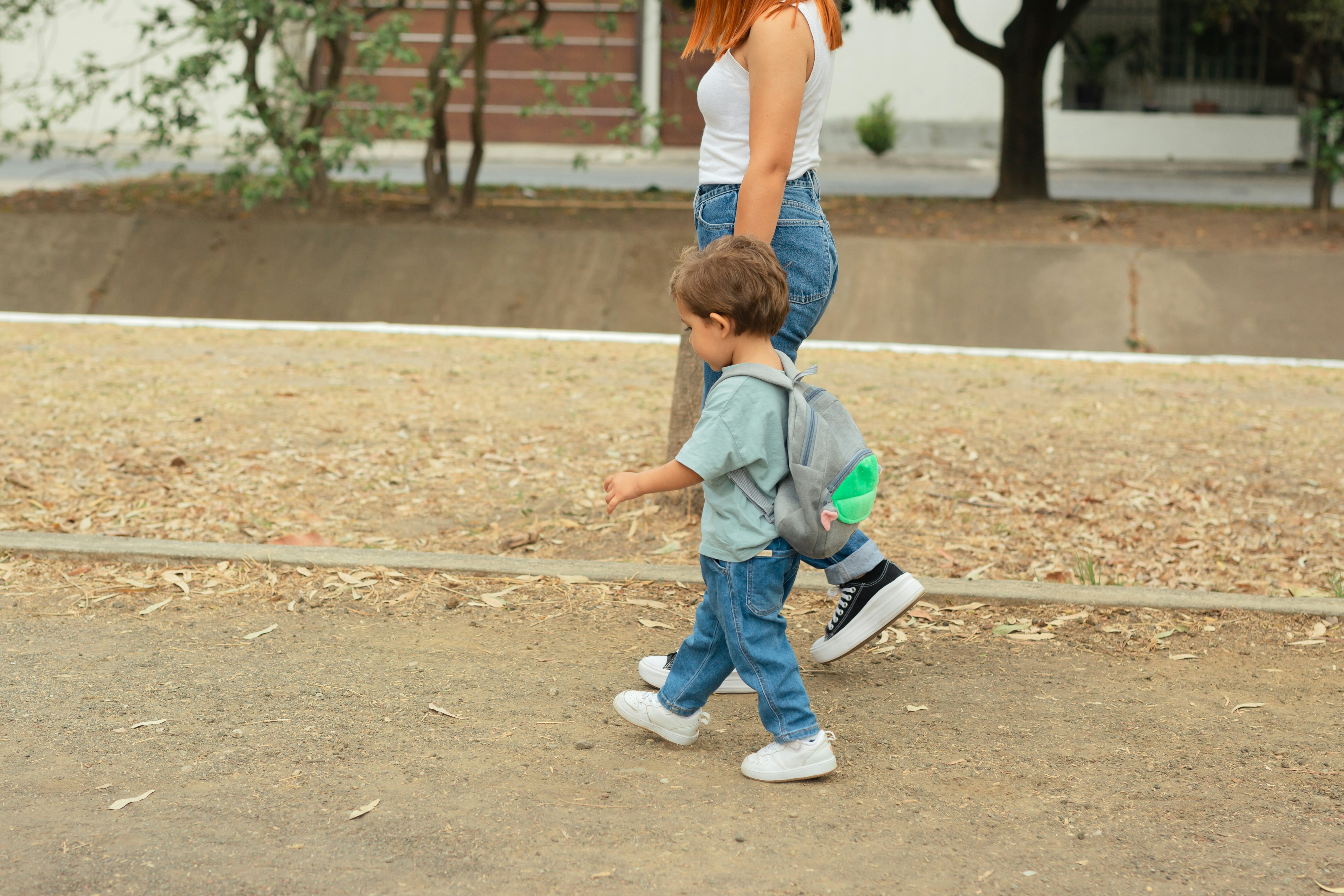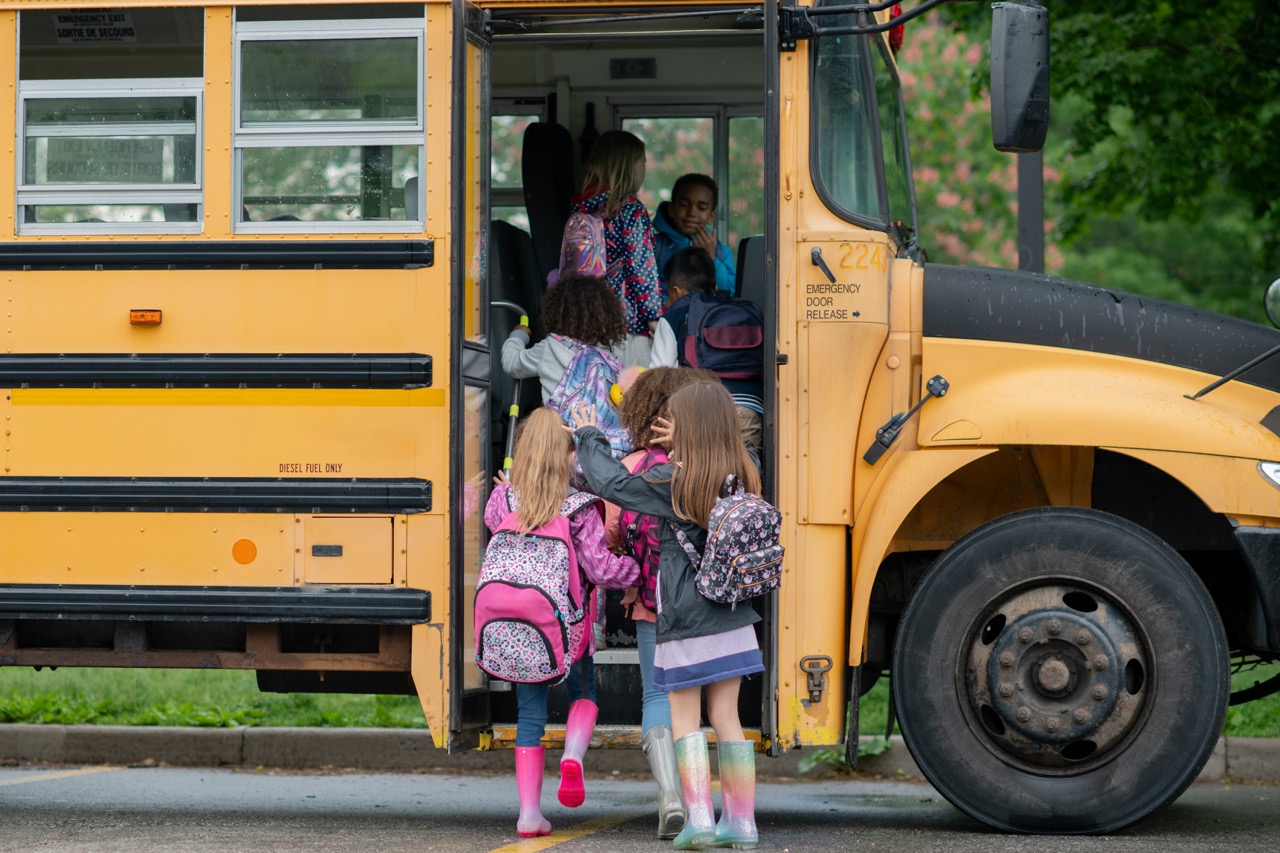With the start of the school year rapidly approaching, many families are crossing their fingers to avoid the difficult drop-off scene: tearful goodbyes, clinging arms, and desperate pleas for “just one more hug.” For many families, drop-off during the back-to-school season isn't smooth.
If you’re navigating the emotional rollercoaster of dropoffs, you’re not alone. And more importantly, there are strategies that can help.
Why Drop-Off Battles Are So Common During Back-to-School
These intense reactions, I’m talking about the meltdowns, refusal to get out of the car, and sudden stomachaches, can feel overwhelming. But in many cases, they’re a completely normal response to stress and transition, and more importantly, these behaviors could be communicating that something else is going on.
Most of the time, these behaviors stem from:
- Separation anxiety: The fear of being apart from a caregiver can be especially strong at the beginning of the year or after long breaks.
- Difficulty with transitions: Moving from home to school is a big shift, mentally, emotionally, and physically.
- Lack of predictability: Without a clear, consistent routine, the uncertainty of what’s next can increase anxiety.
Your child may not have the words to explain what they’re feeling, but their actions are giving you important clues. These drop-off battles are often a sign that they’re trying to avoid these changes or gain engagement from the people around them.
Their behavior is how they’re trying to cope with change: Should they avoid or adapt? From a behavioral lens, these moments are full of important information about what your child needs to feel safe, secure, and supported.
What’s Typical and What May Need Extra Support
Most children adjust to drop-off within a week or two. It’s common to see:
- Tearful goodbyes the first few days, or even the first few weeks
- Difficulty on Mondays or after long weekends
- Hesitation but eventual separation
However, some signs may indicate the need for extra support:
- Panic-level distress, such as hitting, biting, kicking, or screaming, that doesn’t improve over time
- Regression in skills like toileting, sleeping, or talking about school
- Avoidance behaviors, such as refusing to get dressed, hiding before school, or escalating tantrums
If these signs persist, it may be time to consult a therapist for a mental health evaluation or behavior specialist. Early intervention can make a big difference!
!CTA-6
6 Behavior Strategies That Actually Work at Drop-Off
In my 12 years as a Behavior Specialist, I’ve found the following strategies can support smoother transitions for kids.
- Create a consistent drop-off routine: Kids thrive on predictability. Use the same order of events and the same goodbye phrase every day. This may include simple steps like grabbing their backpack and lunch, buckling into the car, picking out their song for the ride to school, walking with mom/dad to the front door, and doing the secret family handshake goodbye. You may also want to include a reference to what happens after school, showing that time at school does come to an end.
- Practice separation at home: Role-play drop-off scenarios or play “goodbye games” to build confidence in a playful way. Switch roles and have your child pretend to drop you off at your front door and wave goodbye (this is a great opportunity to model what they should do at drop off). You can come up with a secret handshake that you get to do before leaving. If available, practice drop offs at a family member’s or friend’s house as though it were school.
- Use positive reinforcement: Create a reward system that recognizes brave behaviors, like entering the classroom or saying goodbye without tears. It’s important to meet your child where they are. If drop-off is a challenge every day, a weekly reward may be earned so long as they transition appropriately three out of five days, or by a certain time each day. Appropriate rewards should include something sustainable like stickers, small treats, or point systems that accumulate to more tangible rewards.
- Keep goodbyes short and sweet: Long, emotional farewells often increase distress. A quick goodbye sends the message that you believe your child can handle the transition.
- Respond to your kiddo's concerns using supportive statements: Supportive statements validate how the child is feeling and that you believe they have the ability to withstand slightly more. Supportive statements are the combination of empathy regarding the child's experience and confidence in their abilities. It is a simple recipe, but both elements are required. This may sound like, “I know it’s hard to leave home sometimes, and I know that you’ll be okay!”
- Use a visual transition plan: especially helpful preschool early elementary students. Download Little Otter’s Transition To & From School!
!CTA-4
What to Avoid: Well-Meaning Habits That Can Backfire
How we as caregivers and parents respond to that communication, influences if the behavior pattern will maintain or change. Sometimes, our natural responses can make separation harder. Here are a few common pitfalls:
- Sneaking out: This may seem like an easier exit, but it can erode trust. Kids need to know that you will always say goodbye and return.
- Over-reassurance: Constantly repeating “You’ll be fine” or “There’s nothing to worry about” can unintentionally reinforce their worry.
- Punishing anxiety-driven behaviors: Focus on building skills, not on discipline.
From a behavior standpoint, many kids engage in escape-maintained behavior — meaning the meltdown is a way to escape something stressful, like separation. If engaging in these challenging behaviors results in an accommodation like not having to go to school that day or delaying the start of the day, your child will be reinforced to engage in that same challenging behavior the next time they want to avoid something stressful.
This can create a stressful pattern for caregivers and children. The key is to stay consistent and follow through on schedule expectations, reinforce positive behaviors, and help your child learn better coping strategies over time. Meet them where they’re at and celebrate small successes towards your overall goal.
Preparing for a Smoother Drop-off
A consistent morning routine can ease anxiety and make transitions less stressful for everyone.
Start at Home:
- Prep the night before: Lay out clothes, pack lunches and backpacks, and check for schedule changes. Talk through the steps of the next morning in simple language, using a visual if available. You can pull up images or videos from online of your child’s school if they have never been there before to help them visualize the transition routine.
- Use a morning checklist: Visual cues or timers can keep kids on track without constant reminders.
- Offer simple choices: Letting kids make small decisions like where to carry their backpack can reduce power struggles.
- Stay calm and neutral: Your steady tone and body language can help regulate your child’s emotions, even when they’re upset.
Partner with the School:
- Create a consistent hand-off routine with a trusted teacher or aide to make goodbyes more predictable.
- Ask about classroom supports like morning jobs, greeters, or calming spaces that ease the transition.
- Use communication tools (like notes or charts) to stay aligned with the school team without needing long conversations at drop-off.
- Collaborate on a shared behavior plan if drop-off struggles persist, so adults respond consistently and supportively.
While it may not feel like it now, this season will pass. Behavior change takes consistency, patience, and support. Most kids adjust with time and practice. But if things aren’t improving, know that help is available. Behavior specialists, therapists, and school staff can work together with you to build a plan that supports your child’s success.
You’re doing a great job. And with the right tools, your child can feel empowered to face the school day with confidence.
in this article
.png)
%20Large.jpeg)











.svg)

